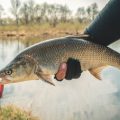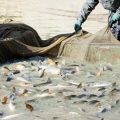Introduction: The Role of British Anglers in Conservation
Angling holds a distinctive place within British culture, weaving together heritage, recreation, and an enduring connection to the nations rivers, lakes, and coastal waters. For centuries, fishing has been more than just a pastime in the UK; it serves as a conduit for community bonding and an appreciation of the natural environment. However, with this cherished tradition comes a responsibility—British anglers play a pivotal role in conserving aquatic biodiversity and ensuring the vitality of freshwater and marine ecosystems. Their actions directly impact fish populations, water quality, and the balance of local habitats. By embracing ethical practices and championing environmental stewardship, anglers contribute significantly to sustaining the country’s rich aquatic life for future generations to enjoy. This article explores how individual and collective efforts by anglers are essential in supporting healthy fish populations and thriving ecosystems across the United Kingdom.
Catch and Release: Techniques for Fish Welfare
Practising catch and release is a cornerstone of responsible angling in the UK, allowing anglers to enjoy their sport while safeguarding fish populations for future generations. To ensure the well-being of fish and the health of aquatic ecosystems, it is essential to adopt techniques that minimise stress and injury during the capture and release process. The following guidance highlights best practices for handling, appropriate tackle selection, and effective methods for releasing fish safely.
Responsible Handling: Minimising Stress and Injury
Handling fish with care significantly reduces the risk of harm. Always wet your hands before touching a fish, as this helps preserve its protective slime coat, which guards against infection. Avoid squeezing or dropping the fish, and keep it in the water as much as possible. Use unhooking mats or soft landing nets to prevent physical damage, especially when fishing from high banks or boats.
Choosing Appropriate Tackle
The selection of tackle plays a vital role in fish welfare. Opt for barbless hooks or those with flattened barbs to make unhooking quicker and less traumatic. Match your rod and line strength to the target species, enabling you to bring fish in promptly without excessive exertion, thereby reducing exhaustion and increasing their chances of survival upon release.
Recommended Tackle Selection Table
| Fish Species | Rod Strength | Line Strength (lb) | Hook Type |
|---|---|---|---|
| Trout | Light/Medium | 4-8 | Barbless size 12-16 |
| Pike | Heavy | 15-20+ | Barbless size 6-10 |
| Carp | Medium/Heavy | 10-15 | Barbless size 8-14 |
Proper Methods for Safe Release
A swift, gentle release gives fish the best chance of recovery. Hold the fish upright in the water, supporting it until it swims away under its own power. Avoid releasing fish into fast currents where they may struggle. If necessary, revive exhausted specimens by moving them gently back and forth to encourage oxygen flow over their gills.
Cultural Note: Respecting Local Byelaws
The UK has region-specific byelaws governing catch limits, seasons, and protected species. Familiarise yourself with local regulations before fishing to ensure compliance and reinforce responsible angling practices within your community.

3. Respecting Closed Seasons and Legal Limits
When it comes to responsible angling in the UK, understanding and adhering to local regulations is essential for safeguarding our fisheries. Each river, lake, and coastal area may have its own specific rules, but overarching guidelines—such as closed seasons and size or bag limits—are set in place to protect vulnerable fish stocks and preserve aquatic habitats. Ignoring these measures can lead to severe consequences for both fish populations and the ecosystems they support.
Understanding Local Regulations
Anglers must familiarise themselves with the byelaws and regulations issued by governing bodies like the Environment Agency or local angling clubs. These rules are not arbitrary; they are based on scientific research and careful assessment of local conditions. The closed season, for instance, typically coincides with key spawning periods when fish are most susceptible to disturbance. By refraining from fishing during these times, anglers allow species such as barbel, coarse fish, or salmonids to reproduce successfully without unnecessary stress or depletion.
The Importance of Size and Bag Limits
Size limits ensure that juvenile fish have a chance to reach maturity and contribute to future generations before being caught. Bag limits, meanwhile, restrict the number of fish an individual can retain in a single session. Such measures prevent overfishing—a real risk in some pressured waters—and help maintain balanced age structures within fish populations. They also encourage selective harvesting, where only surplus individuals are taken home, ensuring the sustainability of our sport for years to come.
Compliance: Protecting Sensitive Life Stages
Abiding by closed seasons and legal limits is more than just ticking a box for compliance; its about protecting fish at their most vulnerable. During spawning or early development stages, disturbances can cause failed reproduction or increased mortality rates among eggs and fry. By observing these restrictions, anglers play a direct role in supporting healthy recruitment cycles and preserving the natural balance of aquatic ecosystems—a responsibility every conscientious angler should take seriously.
4. Preventing Spread of Invasive Species and Diseases
One of the crucial responsibilities for anglers across the UK is actively preventing the spread of invasive species and fish diseases. These threats can dramatically impact native aquatic life, disrupt local ecosystems, and ultimately undermine the health of our cherished fisheries. To safeguard our waters, anglers must adopt stringent best practices when it comes to cleaning equipment, identifying non-native species, and reporting anything unusual.
Best Practices for Cleaning Equipment
Properly cleaning your fishing gear before moving between different bodies of water is essential. This not only helps to prevent the transfer of invasive species such as zebra mussels or killer shrimp but also reduces the risk of spreading harmful pathogens like Gyrodactylus salaris. Adhering to the “Check, Clean, Dry” approach recommended by the Environment Agency is a simple yet effective measure:
| Step | Description |
|---|---|
| Check | Inspect all equipment (rods, nets, boots, boats) for mud, plant material, or animals after each session. |
| Clean | Thoroughly wash gear with water – ideally hot – paying special attention to nooks where debris may hide. |
| Dry | Allow everything to dry completely before reuse; some invasives survive in damp conditions for days. |
Recognising Non-Native Species
Awareness is your first line of defence against invasive species. Familiarise yourself with common non-natives such as signal crayfish, topmouth gudgeon, and floating pennywort. The Angling Trust and various local authorities offer identification guides that can be invaluable on the bank. If you’re unsure about a catch or sighting, err on the side of caution and seek expert advice.
Key Signs of Invasive Species
- Unusual colouration or patterns compared to native species
- Aggressive behaviour in fish not typically seen in local populations
- Rapid growths of unfamiliar plants or algae choking waterways
Reporting Unusual Catches and Observations
If you encounter a fish you suspect to be non-native, or signs of disease (such as lesions, fungus growths, or abnormal behaviour), promptly report these findings. Early detection is vital for effective management and containment. Use the following channels:
- Environment Agency hotline: 0800 80 70 60 (available 24/7)
- Angling Trust’s online reporting forms
- Your local fisheries manager or club official
Cultural Note for UK Anglers
The responsibility to protect our rivers, lakes, and canals goes hand-in-hand with the traditional British respect for nature and fair play. By upholding these best practices—cleaning gear diligently, staying vigilant for invaders, and reporting concerns—you not only contribute to sustainable angling but also ensure future generations can enjoy healthy fisheries across Britain.
5. Stewardship: Maintaining Habitats and Litter-Free Waters
Responsible stewardship lies at the heart of every conscientious angler’s approach, particularly when it comes to protecting the bankside environment and ensuring our beloved waters remain pristine for future generations. The UK’s intricate network of rivers, lakes, and canals depends heavily on anglers taking active steps to preserve habitats and maintain litter-free surroundings.
Protecting Bankside Environments
Healthy fish populations are inextricably linked to thriving bankside ecosystems. Anglers must tread lightly, avoiding trampling sensitive vegetation or disturbing wildlife. Keeping footpaths defined and refraining from creating unnecessary new tracks helps prevent soil erosion and protects crucial spawning grounds. In practice, this means respecting access points provided by angling clubs, not cutting back reeds or marginal plants unnecessarily, and always being mindful of ground-nesting birds during the breeding season.
Proper Disposal of Rubbish and Tackle
Litter is a perennial issue on many British fisheries, with discarded line, bait packaging, and other refuse posing direct threats to aquatic life and local wildlife. Every angler should carry a rubbish bag as standard kit, ensuring all waste—be it used hooks, broken tackle, or even biodegradable items—is taken home or disposed of in designated bins. Special care should be given to retrieving any lost fishing line or tackle from the water or bankside; monofilament especially can entangle birds and mammals. Participating in regular ‘litter picks’, whether organised by clubs or undertaken solo after each session, sets a positive example for others and contributes significantly to cleaner waters.
Engagement in Habitat Restoration Projects
Beyond day-to-day practices, anglers are uniquely positioned to champion and participate in habitat restoration projects across the UK. Many fisheries run volunteer days focused on tasks such as planting native vegetation, building fish refuges, or removing invasive species like Himalayan balsam. By getting involved with local angling associations or conservation groups, individuals can play an active role in enhancing both fish stocks and wider biodiversity. These efforts not only improve the quality of fishing but also help secure the health of British waterways against ongoing environmental pressures.
Conclusion: A Legacy for Future Generations
The responsibility of stewardship extends far beyond the act of casting a line—it encompasses every aspect of how anglers interact with their environment. By maintaining habitats and keeping waters litter-free, we ensure that angling remains a sustainable pursuit that benefits both people and nature throughout Britain.
6. Community Engagement and Education
Active involvement in local angling clubs is at the heart of responsible fishing in the UK. By joining these organisations, anglers not only gain access to invaluable local knowledge and camaraderie but also become part of a wider effort to safeguard our waterways. Encouraging new members, especially those just starting out, is essential for passing on best practices—such as correct catch and release techniques, respecting closed seasons, and adhering to bag limits—all of which are fundamental for maintaining healthy fish populations.
The Importance of Local Clubs
Local angling clubs serve as vital hubs for both social connection and stewardship. They often organise riverbank clean-ups, habitat restoration projects, and educational workshops that directly benefit our aquatic ecosystems. By taking part in these initiatives, anglers demonstrate leadership and commitment to their environment.
Educating Newcomers
Seasoned anglers have a responsibility to educate newcomers about the importance of ethical fishing practices. This can include everything from demonstrating proper handling of fish to explaining the significance of using barbless hooks or biodegradable tackle. Such guidance helps instil respect for nature and ensures that even novice anglers contribute positively to local fisheries.
Working Together for Sustainable Futures
Sustainable fishing hinges on a collective effort. By collaborating within our communities—sharing knowledge, promoting conservation, and advocating for science-based regulations—we ensure that future generations can enjoy thriving fisheries. Through continued education and engagement, UK anglers uphold a proud tradition while championing the health of our rivers, lakes, and coastal waters.

